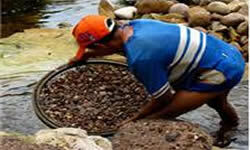The inhabitants of the Americas in the period in which they were discovered by the Europeans are called Indians, and they remained so called over time. Previously, Brazil was occupied by five million Indians, but this number changed when people discovered the wealth existing in indigenous territory that caused many to be decimated and expropriated from their territory. Today, there are around 370,000 Indians spread across Brazil, around 190,000 of them in the northern region.
They are supported by the Federal Constitution and by FUNAI (National Indian Foundation) which give them possession of the lands where they are housed and offer them exclusivity to live off the resources existing in the same. Despite all the existing ostentation, irregular practices and projects occur in the indigenous territory, as these are invaded and taken over in order to extract sources of money.
The best known illegal practice in indigenous territory is mining, which despite being illegal is growing with alarming numbers. In 2004, the Roosevelt reserve, belonging to the Cinta Larga which is located between Rondônia and Mato Grosso, was invaded by miners when they discovered that the region was the largest reserve of diamonds in the world and that it could supply a million carats per year. This invasion resulted in a bloody conflict, as 29 miners were killed by the Indians as they tried to defend their space.

In the same year, the region between Roraima and Amazonas, where the Yanomami reserve is located, was invaded in a different way. The miners proposed to the Indians that they allow them to explore the territory in search of ores while distributing shotguns and ammunition to them, who quickly accepted the deal. One of the village leaders stated that the government does not prevent or intimidate the action of miners in the region who threaten the lives of the Yanomami with STDs, flu, malaria and conflicts bloody, since when the villages face each other they generate a large number of dead, and these, according to the Yanomami tradition, are avenged, generating a conflicting cycle between the Indians.
The international clandestine trade network, which remains behind the miners, does not suffer, on the contrary, if enrich and deprive the country of the opportunity to excel in mineral exports and take around 800 million collections per year.
By Gabriela Cabral
Brazil School Team
Human Geography of Brazil - geography of Brazil
geography - Brazil School
Source: Brazil School - https://brasilescola.uol.com.br/brasil/conflito-entre-indios-garimpeiros.htm
